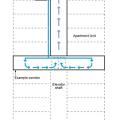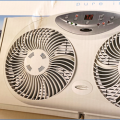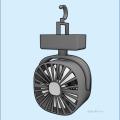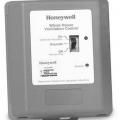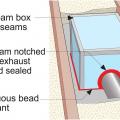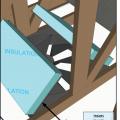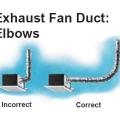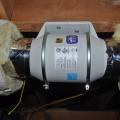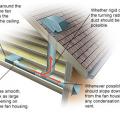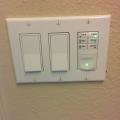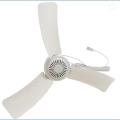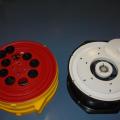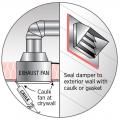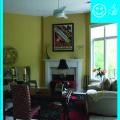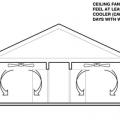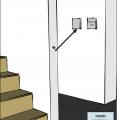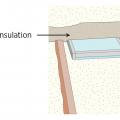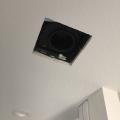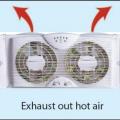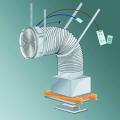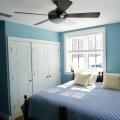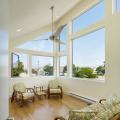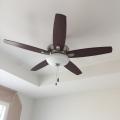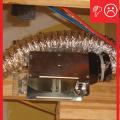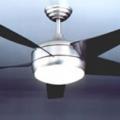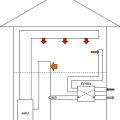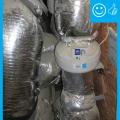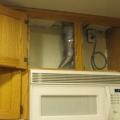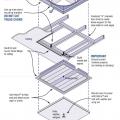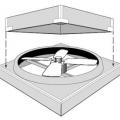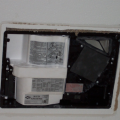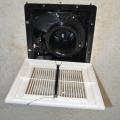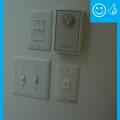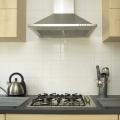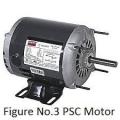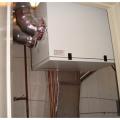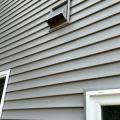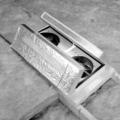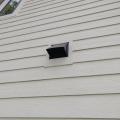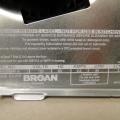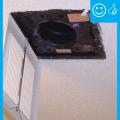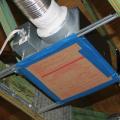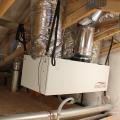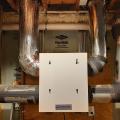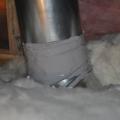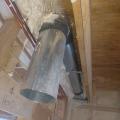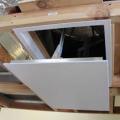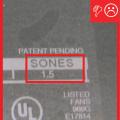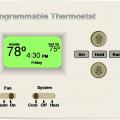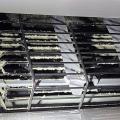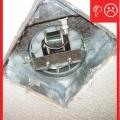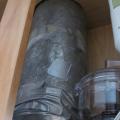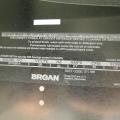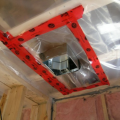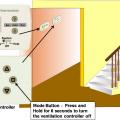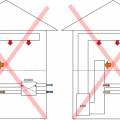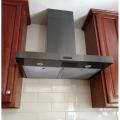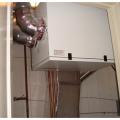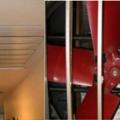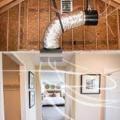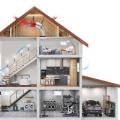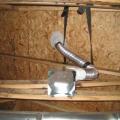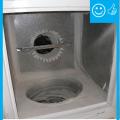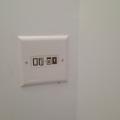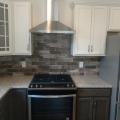Showing results 1 - 100 of 130
This central ventilation system uses an energy recovery ventilator to supply air to the corridor and exhaust air from the elevator shaft of a multifamily building
A central fan-integrated supply system uses a fresh air intake ducted to the home's central furnace or air handler unit to supply fresh air throughout the home
A Corsi-Rosenthal Box is a highly effective DIY air cleaner made of easy to obtain materials such as HVAC filters, a box fan, cardboard, and tape
A reversible window fan can operate via thermostatic or remote control and can selectively exhaust air or bring in outdoor air
A variety of battery-powered fans can be used for a cool room without electric power; most charge off a USB charger so they can be solar charged
A ventilation controller with a manual override is located on a central air handler fan that is located in an accessible location
Air flow is produced when central HVAC fan is energized (set thermostat to “fan”)
Air seal and insulate around the exhaust fan with a rigid foam box
Air seal around kitchen and bathroom exhaust fans to keep conditioned air from leaking into unconditioned space.
Allow two to three feet of straight duct run from the fan exhaust port to the first elbow
An in-line exhaust fan supplements the ability to exhaust moisture-laden air and lint from a dryer
Bathroom exhaust fans are timer-operated to encourage removal of moisture from the home.
Calibrated blower door fans are used for envelope leakage testing
Caulk or foam seal between the exhaust fan housing and the ceiling gypsum; install a gasket or caulk around the exterior exhaust duct vent
Ceiling fan meets minimum clearance
Ceiling fans can be used to aid a night flush strategy by helping to cool down wall and floor surfaces more thoroughly at night, and by providing comfort ventilation during the day
Continuously-operating ventilation & exhaust fans include readily accessible override controls
Cut a neat hole in the ceiling with smooth edges in which the exhaust fan housing will fit snugly
Double fan window units can have multiple operational modes; most often outdoor air will be brought in at night when outdoor conditions are cooler
Ducted whole-house fans should be installed with the duct curved and the fan suspended from rafters to reduce noise and vibration transmission to the living area.
ENERGY STAR ceiling fans can help occupants feel cool so HVAC air conditioning systems can be turned down for energy savings.
ENERGY STAR requires exhaust fans set for intermittent operation to have a sound rating of ≤ 3 sones and exhaust fans set for continual operation to have a sound rating of ≤ 1 sone.
ENERGY STAR-rated ceiling fans and openable windows oriented to prevailing summer breezes help provide low-cost cooling.
ENERGY STAR-rated ceiling fans save energy when operating and provide cooling movement to reduce the need for coolant-based air conditioning.
Exhaust fan installed but in wrong direction causing excessive bend and duct is uninsulated
Exhaust pipe should be made of smooth, rigid duct and any bends should be gradual, not sharp
If integrating an ERV/HRV with the heating/cooling duct system, add dedicated ducts for either the supply or return side to prevent short-circuiting of air distribution
In this ventilation configuration for a multifamily building, outside air enters through a dedicated outdoor air system (DOAS), and inside air exits the space through bathroom and kitchen exhaust fans
Install the fan either in the range hood, the cabinet above the stove, or on the wall above the stove
Installing an ENERGY STAR ceiling fan is a low-energy way to improve comfort in a designated cool room
Intermittent supply and exhaust fans rated at ≤ 3 sones by manufacturer, unless rated flow ≥ 400 CFM
Lower-cost local ERVs are usually installed in a ceiling to supply outdoor air to and exhaust air from the room in which they are located
Opening the outlet on a bath fan reveals model information and provides access to the motor
Rater-measured ventilation rate is within 100-120% of HVAC contractor design value (2.11)
Right - Each individual unit in this multifamily building has its own energy recovery ventilator (ERV) to provide balanced ventilation to the dwelling
Right - The kitchen exhaust duct termination is integrated aesthetically and functionally with the exterior cladding; however, the opening should be screened to keep out pests.
Right - This ceiling-mounted mini whole-house fan has built-in insulated covers to reduce heat loss when the fan is not in use
Right - This kitchen exhaust duct termination is integrated aesthetically and functionally with the exterior cladding.
Right - This manufacturer's label shows a CFM higher than the requirement, increasing the likelihood that it will meet the performance level once installed.
Right – a booster fan was installed in this long dryer duct to increase air flow and help prevent the duct from being clogged with lint
Right – Fan with a cleanly cut and properly sized hole has been air sealed to drywall
Right – The exhaust fan duct is sealed to the fan with mastic and the fan opening is covered with cardboard to keep out dust during construction.
Right – The HVAC unit installed in the insulated attic uses a heat pump to provide heating and cooling while also providing dehumidification and fresh air ventilation.
Right – This energy recovery ventilator provides fresh air and exhausts stale air through a heat exchanger that recovers heat from the outgoing air in winter and reduces heat from incoming air in the summer to provide ventilation without wasting energy.
Right – This exhaust fan duct is made of smooth rigid metal and the duct is mastic sealed at the joints.
Right – This kitchen exhaust duct is made of smooth rigid metal and the duct is mastic sealed at joints
Right – This kitchen exhaust fan duct is made of smooth round steel duct that takes the shortest, most direct route to the outdoors and joints are sealed with mastic.
Right – This kitchen exhaust fan has a damper to prevent outside air from entering when the fan is not operating
Some whole-house fans are equipped with an automatic drop-down cover to provide an air seal at the ceiling level when the fan is not in use
Some whole-house fans use an automatic insulated cover achieve high R-values when the fan is not in use
The blower wheel (fan) on this ductless wall-mounted indoor unit has accumulated dust and mold - a common issue for this design.
The elevator shaft in this multistory multifamily building has an exhaust fan that maintains a slight negative pressure to control odors; there is also a smoke vent that is dampered closed during normal conditions.
The ENERGY STAR logo on the manufacturer’s label indicates this is an ENERGY STAR qualifying exhaust fan
The exhaust fan housing may have holes that allow conditioned air to leak into the attic
The gap around this kitchen exhaust duct represents a significant source of air leakage to the unconditioned attic
The manufacturer’s label found on this exhaust fan housing shows a sone rating of 1.0
The polyethylene ceiling vapor barrier is sealed to form an air barrier around the exhaust fan in this very cold climate location (≥ CZ 6).
The ventilation controller is next to the thermostat and has a manual override button
These ERV/HRV configurations are NOT recommended because outdoor air can be sucked back into the ERV/HRV before being distributed to the living space
This bath exhaust fan ventilation control can be set by the HVAC technician for continuous operation, delayed shut off, or a set amount of minutes each hour
This central ventilation system uses an energy recovery ventilator, pre-conditioning unit, and elevator shaft exhaust fan to supply air to dwelling units and corridors and to exhaust air from units and the elevator shaft in a multifamily building
This ducted, wall-mounted range hood exhaust fan replaced a recirculating fan that did not adequately remove kitchen contaminants.
This energy recovery ventilator (ERV) provides balanced ventilation to a dwelling unit in a multifamily building
This whole house fan is suspended from rafters and connected to the intake grille by a curved insulated duct, greatly reducing vibration and noise in the occupied space
This whole-house fan is suspended from rafters and connected to the intake grille by a curved acoustic duct, greatly reducing vibration and noise in the occupied space
Vent the kitchen fan exhaust directly to the outside, not into an attic, crawlspace, or space between floors
Wall controls operate the windows and fans allowing homeowners to capture prevailing breezes.
